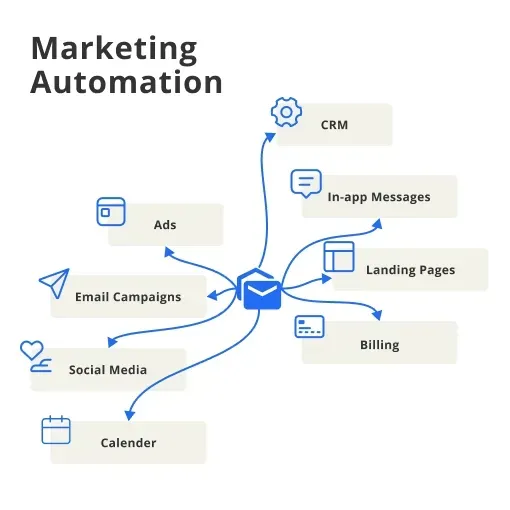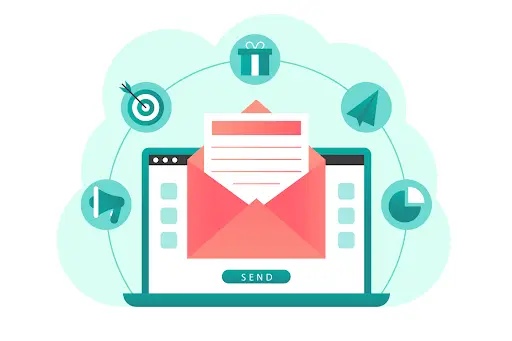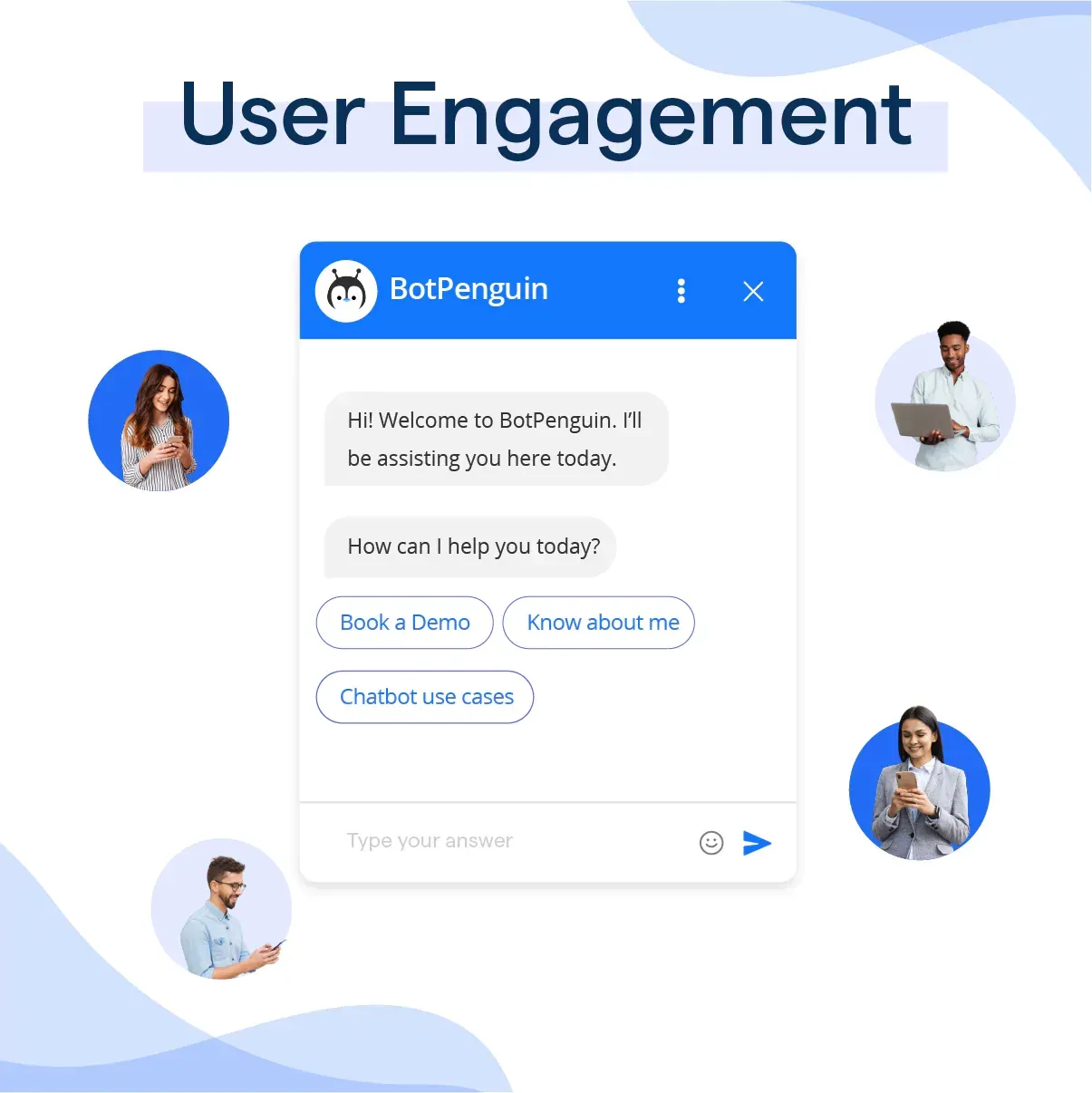Introduction
In digital marketing, staying competitive and maximizing returns on investment (ROI) are paramount objectives for businesses.
With the advent of marketing automation tools, companies have found a potent solution to streamline their marketing efforts and drive growth.
However, the true measure of success lies in effectively gauging the ROI generated through these automated marketing campaigns.
As businesses increasingly rely on automation for marketing tasks, understanding the metrics essential for evaluating ROI becomes indispensable. Marketing automation not only promises enhanced productivity but also demands meticulous measurement methodologies to ascertain its effectiveness.
This article encompasses an exploration of pivotal metrics such as customer acquisition cost (CAC), customer lifetime value (CLV), conversion rates, and more.
Measuring the ROI of marketing automation allows companies to assess the impact of their efforts, optimize campaigns, and allocate resources more efficiently.
So continue reading to know the key metrics for measuring ROI in marketing automation.
What is a Good ROI for Marketing Automation?

The calculation of an acceptable ROI for automation depends on a variety of standards, including industry, corporate goals, and investment levels.
However, as a general rule, a positive ROI is regarded as excellent.
Factors Affecting ROI
Marketing automation ROI depends on several important aspects.
Factors such as industry-specific details, the success of your marketing initiatives, the effectiveness of your automation systems, the skill level of your marketing staff, and changes in the preferences of your target audience are all very important.
These factors work together to create a complicated and ever-changing web of effects on ROI, which ultimately decides how well your marketing automation investments perform.
Benchmarking ROI

Comparing your results to competitors' and industry standards' performance is important for figuring out what makes a strong return on investment (ROI) for your automation campaigns.
Get information about the average return on investment (ROI) in your field by reading case studies, and industry publications, and speaking with professionals. With the help of this benchmarking exercise, you may establish reasonable targets and assess your ROI.
We will look at the most important indicators that companies must track in the upcoming parts to calculate the return on investment from marketing automation.
You can gain important insights into the success of your marketing initiatives and make smart choices that maximize return on investment by understanding and assessing these indicators.
Measuring ROI in Marketing Automation: Key Metrics to Track
In this section, you will find the key metrics for measuring ROI in marketing automation.
Conversion Rate

A key performance indicator called conversion rate shows the percentage of visitors to the website that complete the planned activity, such as submitting a form or completing a purchase.
It displays how well your marketing campaigns are working and how well your automation techniques are working. greater clients and greater sales are the results of a higher conversion rate.
How to Calculate Conversion Rate in Marketing Automation
In marketing automation, the conversion rate is calculated by dividing the total number of visits by the number of conversions, or planned actions, and then multiplying the result by 100.
Conversion Rate = (Number of Conversions / Total Number of Visitors) * 100
Tips for Improving Conversion Rate
The tips for improving conversion rate are the following:
Create Personalized Experiences: Use marketing automation to provide customized promotions and communications to customers depending on their behavior and customer segmentation.
Conversion rates increase when content and offers are customized to meet specific demands.
Optimize Landing Pages: Make sure your landing pages are designed for conversion, visually appealing, and easy to use.
Use attention-grabbing headlines, convincing language, and obvious call-to-action buttons to nudge visitors in the direction of conversion.
A/B Testing: To maximize your conversion rate, test various elements including call-to-action buttons, graphics, and headlines.
By using A/B testing, you can determine which aspects work best and adjust your approach appropriately.
Customer Acquisition Cost (CAC)

Customer acquisition cost (CAC) measures the amount of money spent to acquire a new customer.
It is a crucial metric for assessing marketing ROI, as it helps determine the cost-effectiveness of your acquisition strategies. By minimizing CAC, you can improve profitability and maximize the return on your marketing automation investment.
Formula for Calculating CAC in Marketing Automation
The formula for calculating CAC in marketing automation is:
CAC = (Total Marketing and Sales Costs / Number of New Customers Acquired)
Strategies to Reduce CAC
The strategies to reduce CAC are the following:
Targeted Advertising: Utilize marketing automation to target your advertising efforts specifically toward your ideal customer profile.
By reaching the right audience with the right message, you can reduce wasteful spending and optimize your marketing budget.
Lead Nurturing: Implement lead-nurturing campaigns to engage and educate potential customers throughout their buying journey.
By building trust and providing value, you can increase conversion rates and reduce CAC.
Referral Programs: Encourage your existing customers to refer your products or services to their network.
Implement referral programs with incentives to motivate customers and reduce CAC through word-of-mouth marketing.
Suggested Reading:
Using Marketing Automation to Drive Lead Generation
Customer Lifetime Value (CLTV)

A measure known as customer lifetime value (CLTV) shows how much money you expect a client will bring in throughout their association with your company.
It helps in evaluating the success of your marketing automation efforts and offers insights into the long-term worth of your clientele. Improving ROI and maintaining business development need improving CLTV.
Methods for Calculating CLTV in Marketing Automation
In marketing automation, there are several ways to determine CLTV, including:
Average Purchase Value × Average Purchase Frequency: The CLTV may be calculated by multiplying the average buy value (total revenue/number of transactions) by the average purchase frequency (number of purchases/number of clients).
Average Purchase Value × Average Customer Lifespan: To calculate CLTV, multiply the average purchase value by the typical customer lifespan, or length of the customer connection.
Suggested Reading:
How To Maximize Marketing ROI With AI: Key Tips & Techniques
How to Increase CLTV through Marketing Automation
Here are the methods to increase CLTV through marketing automation:
Upselling and Cross-Selling: Use marketing automation to find chances for cross-selling and upselling. By making useful product or service recommendations to current clients, you could increase their CLTV and average purchase value.
Personalized Communication: Engage your audience with individualized and focused communication. You can increase client loyalty and retention by sending them offers and materials that are specifically catered to their interests and behavior.
Customer Retention Campaigns: Use marketing automation routines to maintain and grow your current clientele. You may increase CLTV and prolong the life of your customers by attending to their demands, giving them unique deals, and delivering continuous value.
Lead-to-Customer Ratio
The lead-to-customer ratio measures the percentage of leads that eventually convert into customers.
It is a crucial metric that highlights the effectiveness of your marketing efforts and the returns generated from your lead-generation strategies.
A higher lead-to-customer ratio indicates better lead nurturing and a higher likelihood of converting leads into paying customers.
Calculating the Lead-to-Customer Ratio
The number of customers acquired divided by the total number of leads and multiplied by 100 gives the lead-to-customer ratio.
Lead-to-Customer Ratio = (Number of Customers Acquired / Total Number of Leads) * 100
Tips for Improving the Lead-to-Customer Ratio
The tips for improving the lead-to-customer ratio are the following:
Effective Lead Scoring: Implement lead scoring to arrange and qualify leads based on their conversion potential. You may focus your efforts on nurturing and converting the most promising leads by identifying them.
Personalized Lead Nurturing: Marketing automation can help you send personalized and relevant information to your leads.
Divide your leads based on their hobbies, demographics, or behavior, and then personalize your marketing to their needs. You may enhance your chances of turning them into clients by addressing their individual pain areas and interests.
Streamline Sales and Marketing Alignment: Encourage your sales and marketing departments to collaborate and coordinate.
Create efficient lead-handoff procedures, such as establishing the criteria for transferring leads to sales and carrying out lead nurturing schedules. Alignment enables effortless changes and increases conversion rates.
ROI in Marketing Automation

The profitability and success of your marketing automation operations are measured by ROI. It shows the returns on your investment and helps you assess the impact of your efforts.
ROI tracking allows you to make data-driven decisions, optimize your strategy, and get the most out of your marketing automation investment.
Calculating ROI in Marketing Automation
The formula for calculating ROI in marketing automation is:
ROI = (Revenue Generated - Investment) / Investment * 100
Strategies for Maximizing ROI
The strategies for maximizing ROI are the following:
Set Clear Goals: For your marketing automation efforts, set SMART (specific, measurable, attainable, relevant, and time-bound) targets.
Having well-defined goals aids in concentration and accurate evaluation of the effects of your automation tactics.
Track and Analyze Data: To track and analyze data, including revenue, consumer behavior, and conversions, use marketing automation solutions.
Learn which channels and campaigns are producing the most results so you may adjust the way you work.
Continuous Optimization: Examine your marketing automation initiatives regularly to find areas that need work. To increase the efficacy and return on investment of your campaigns, try varying factors, try out novel tactics, and improve them.
Email Marketing Metrics

One of the most effective marketing automation tools for measuring ROI is email marketing.
Measuring email marketing data enables you to measure client interaction, evaluate campaign efficacy, and raise total return on investment. Consider the following important email marketing metrics:
Key Email Marketing Metrics to Track in Marketing Automation
The key email marketing metrics for tracking in marketing automation are the following:
Open Rate: The percentage of recipients that click through to your email. Effective subject lines and captivating material are indicated by a high open rate.
Click-Through Rate (CTR): The percentage of recipients in your email that click on a link. The persuasiveness and importance of your material are reflected in the CTR.
Conversion Rate: The percentage of recipients who complete the intended task, like buying something or completing a form. The success of your email campaign in achieving targeted results can be measured by the conversion rate.
Suggested Reading:
Getting Started with AI Marketing Automation: A Quick Guide
Best Practices for Optimizing Email Marketing Metrics
The best practices for optimizing email marketing metrics are the following:
Personalization: Use marketing automation to personalize the content of your emails according to recipient information, including name, geography, or past purchases.
Higher conversion rates and improved engagement are the results of personalized emails.
Compelling Subject Lines: Create compelling subject lines to get people to open your emails. Finding the best subject lines for your audience might be aided by A/B testing.
Clear Call-to-Action (CTA): Make CTAs that are obvious and easy to see so that receiver may follow your intended action. Create a feeling of urgency, compelling language, and noticeable buttons to entice visitors to click through and convert.
User Engagement Metrics

Metrics for measuring user engagement help you determine how engaged and interested people are with your marketing automation campaigns.
You can better understand consumer behavior, spot opportunities for development, and improve your ads for more engagement and return on investment by monitoring these indicators.
Essential User Engagement Metrics to Track for Measuring ROI
The essential user engagement metrics for tracking ROI are the following:
Time-on-Site: how long visitors stay on your website. Greater involvement and interest in your material are shown by longer durations.
Pages Per Visit: The number of pages a visitor views on average in a session. A higher score denotes more in-depth usage and investigation of your website.
Social Shares: The number of times people share your material on social media. Social media shares let other users know how much you value them and might help you reach new audiences.
Techniques for Improving User Engagement Metrics
The techniques to improve user engagement metrics are the following:
Compelling Content: Provide your readers with valuable material that is of the highest caliber, important, and engaging. To satisfy a range of tastes, make use of many forms, including blog entries, infographics, and videos.
Seamless User Experience: Make sure your website is responsive, easy to use, and accessible on all platforms. Improve website load times, remove barriers, and offer intuitive navigation to improve user experience.
Interactive Elements: To encourage active user participation and boost engagement, include interactive features like surveys, quizzes, and interactive movies.
Conclusion
In conclusion, measuring ROI in marketing automation is imperative for businesses aiming to optimize their marketing strategies efficiently. By tracking key metrics organizations can gain valuable insights into the effectiveness of their marketing automation efforts.
Through automation for marketing, businesses can streamline processes, enhance targeting precision, and ultimately boost ROI. However, success in marketing automation requires a well-thought-out strategy aligned with organizational goals and objectives.
Moreover, it's essential to continuously monitor and analyze the metrics to identify areas of improvement and refine strategies accordingly. This iterative approach allows businesses to adapt to changing market dynamics and consumer behaviors effectively.
Furthermore, integrating marketing automation with other business systems like CRM software enables a more holistic view of customer interactions. It also facilitates personalized marketing campaigns tailored to individual preferences.
Ultimately, a comprehensive understanding of marketing automation ROI empowers businesses to make informed decisions, allocate resources efficiently, and drive sustainable growth.
Suggested Reading:
How to Implement Healthcare Marketing Automation?
Frequently Asked Questions (FAQs)
How do you measure the ROI of marketing automation?
Measuring the ROI of marketing automation involves calculating the total revenue generated from automated campaigns, subtracting the total investment in the campaigns, and dividing the result by the total investment, providing insights into the profitability and success of marketing automation initiatives.
What are the key metrics to track when measuring the ROI of marketing automation?
Key metrics to track when measuring the ROI of marketing automation include customer acquisition cost (CAC), customer lifetime value (CLV), conversion rates, lead-to-customer ratio, and marketing-qualified leads (MQLs), offering valuable insights into the effectiveness and financial performance of marketing automation efforts.
How can businesses calculate the return on investment (ROI) for specific marketing automation campaigns?
Businesses can calculate the ROI for specific marketing automation campaigns by subtracting the total campaign costs from the total revenue generated by the campaign, dividing the result by the total campaign costs, and then multiplying the outcome by 100, providing a clear assessment of the campaign's financial performance and success.
What is the role of cost per lead (CPL) in evaluating the ROI of marketing automation?
Cost per lead (CPL) plays a critical role in evaluating the ROI of marketing automation by determining the cost-effectiveness of lead generation efforts, helping businesses assess the efficiency of their marketing campaigns, and making informed decisions to improve lead quality and overall campaign profitability.


